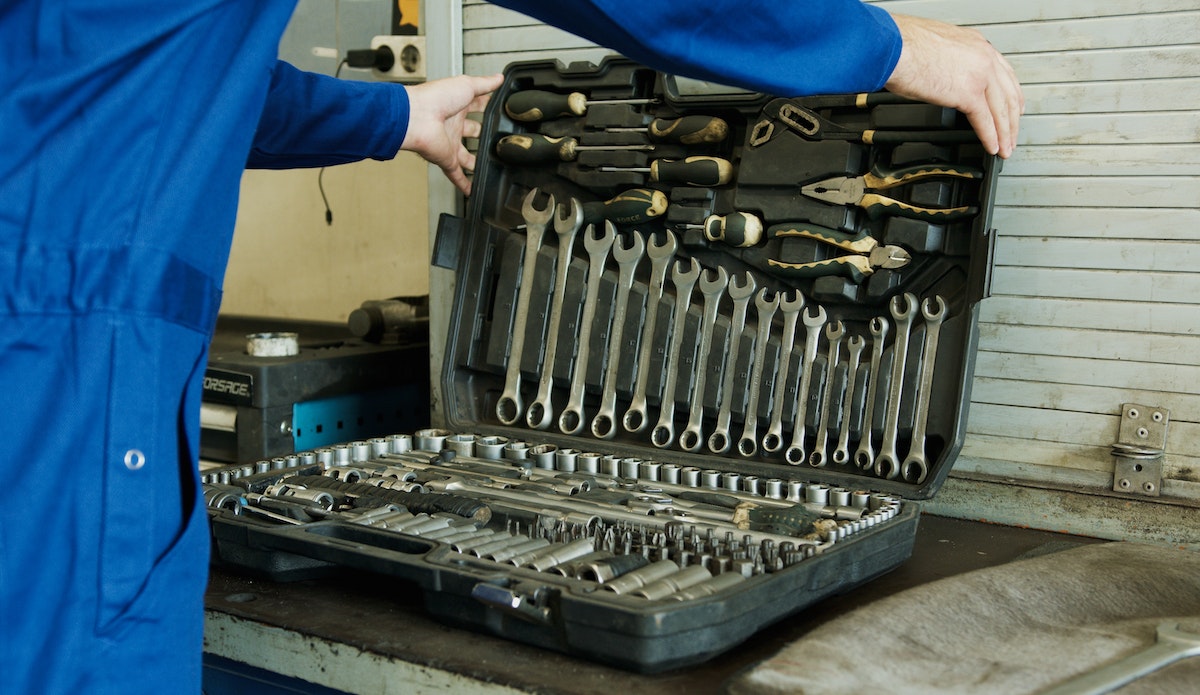Maintenance is an essential part of owning and operating tools. Without a proper maintenance routine, tools can become damaged, are not as effective, and will eventually need to be replaced. Taking the time to properly care for and maintain your hand and power tools will help them last much longer.
Hand and power tools in particular require a little bit of extra care and attention to ensure they remain in good condition. Below are some tips for maintaining your hand and power tools, so you can get the most out of them.
Table of Contents
1. Inspect tools regularly
You should inspect your tools on a regular basis to make sure they’re in perfect working order. For more complex tools, such as power tools, there may be more parts that need to be inspected for wear and tear.
If any part of your tool needs to be replaced, make sure you buy the correct replacement parts. Make sure the parts are well-fitted and securely fastened before using the tool again.
2. Clean the tools
It’s important to clean your tools after each use. This will help prevent dirt, dust, and debris from building up on them and causing damage.
For hand tools, you can use a soft cloth with soapy water to gently wipe down the surface. For power tools, use a damp cloth to remove any debris from the moving parts and make sure all dust is removed from around the motor.
3. Lubricate moving parts
The moving parts of hand and power tools need to be lubricated on a regular basis. This will help them move more smoothly and reduce the chances of wear and tear occurring.
Make sure you use the correct type of lubricant for your particular tool, as some may be incompatible with certain materials.
4. Store tools properly
When not in use, your tools should be stored away in a clean and dry place. This will help protect them from dirt, dust, moisture, and extreme temperatures that can cause damage. Use a high-quality toolbox or bag to keep your tools safe and organized.
It’s also important to keep your tools organized and out of reach from children. This will help prevent any accidents from occurring, as well as make it easier for you to locate the right tool when you need it.
5. Regularly sharpen blades
Blades of hand and power tools should be sharpened on a regular basis. This will help improve their performance and reduce the risk of them becoming damaged from use.
For hand tools, you can sharpen blades using a file or sharpening stone. For power tools, make sure to follow the manufacturer’s instructions when sharpening blades.
6. Protect from rust
Metal tools can easily rust if they are not properly wiped down or stored in a dry environment. You should apply a thin coat of oil to metal tools after each use, as this will help protect them from rust.
You should also make sure to store your tools in a cool and dry area, away from any moisture or humidity. This way, you can help ensure that your tools remain in good condition for a longer period of time.
7. Checking for damage
Before using a tool, always inspect it for wear and tear. Check that all screws are tight, hinges are working properly, and blades are sharp. If you notice any damage or wear, repair it immediately before using the tool again.
Another important step is to read the manufacturer’s instructions before using a tool, as this may provide important safety or maintenance information.
8. Cool down heating tools
Power tools that generate heat should be allowed to cool down before being put away. This will help them last longer and reduce the risk of them becoming damaged due to overheating.
Drilling into concrete or other hard surfaces can cause power tools to overheat quickly, so you should always give them time to cool down in between uses.
9. Calibrate tools
For more complex power tools, such as routers and saws, it’s important to calibrate them regularly. This will ensure they are cutting and drilling accurately, which will help improve the accuracy of your workmanship.
Calibrating is a relatively simple process, but it’s important to follow the manufacturer’s instructions carefully. This way, you can help ensure that your power tools remain in perfect working condition for longer.
Conclusion
By following these tips, you can ensure that your hand and power tools remain in good condition for years to come. Taking the time to inspect and maintain your tools regularly can help you save money in the long run, while also helping to keep you safe.

Alex is fascinated with “understanding” people. It’s actually what drives everything he does. He believes in a thoughtful exploration of how you shape your thoughts, experience of the world.


